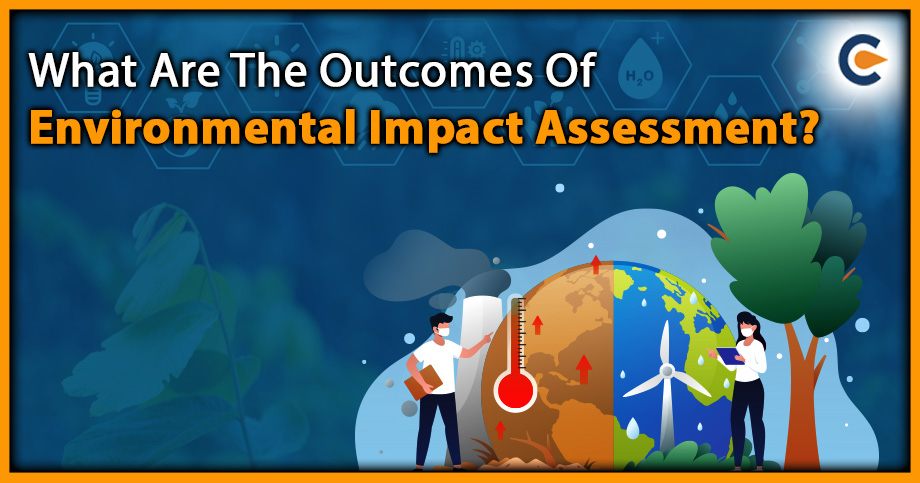A Baseline Study in EIA process refers to a comprehensive assessment of an area’s existing environmental conditions and characteristics that may be potentially affected by a proposed project. The relevance of the Baseline Study in EIA process cannot be overstated. It provides essential information that guides decision-making on the proposed project, ensures compliance with regulatory requirements, and helps minimise the project’s adverse impacts on the environment and communities. The study aims to establish a clear understanding of the natural and human systems in the project area and to identify potential environmental, social, and economic impacts that may result from the project.
Baseline Study in EIA process usually includes data collection and analysis on various aspects of the project area, such as:
- Physical Environment (e.g., topography, geology, soil, water, air quality, and climate).
- Biological Environment (e.g., flora and fauna, habitat, biodiversity, and ecological processes).
- Social And Cultural Environment (e.g., the local community’s demographic, socioeconomic, and cultural aspects, and any cultural heritage or archaeological sites).
- Economic Environment (e.g., employment, income, and economic activities of the local community).
What Is The Relevance Of The Baseline Study In EIA Process?
Baseline studies are an essential component of the Environmental Impact Assessment (EIA) process, and they serve several crucial functions, including:
- Establishing a Comprehensive Understanding of the Existing Environmental Conditions: Baseline studies provide a comprehensive assessment of the project area’s existing environmental conditions and characteristics, including natural and human systems. This understanding is necessary for identifying the potential impacts of the proposed project.
- Providing A Reference Point For Impact Assessment: Baseline studies provide a reference point for assessing the proposed project’s impacts. With a clear understanding of the existing environmental conditions, it is easier to determine the magnitude and significance of the project’s potential effects.
- Identifying Potential Environmental, Social, and Economic Impacts: Baseline studies identify potential impacts on the natural, social, and economic environment that may arise from the project. This information is critical for developing appropriate mitigation measures to avoid or minimise the project’s adverse effects.
- Facilitating Public Participation: Baseline Study in EIA process are often conducted in consultation with stakeholders and the public, and this process can help to increase awareness and understanding of the project’s potential impacts.
- Meeting Regulatory Requirements: Regulatory agencies often require baseline studies as part of the EIA process. The studies must meet specific regulatory requirements and guidelines, and failure to conduct a baseline study that meets these requirements can result in delays or rejection of the proposed project.
In summary, the relevance of the Baseline Study in EIA process cannot be overstated, as it provides essential information that guides decision-making on the proposed project, ensures compliance with regulatory requirements, and helps minimise the project’s adverse impacts on the environment and communities.
What Is the Various Baseline Study Involved In EIA Process?
Baseline Study in EIA process is an important part. They typically involve collecting and analysing data on various aspects of the environment that may be potentially affected by the proposed project. Here are some of the typical baseline studies involved in the EIA process:
- Physical Environment Baseline Study: This involves the collection and analysis of data on the physical aspects of the environment, such as topography, geology, hydrology, soil, air quality, and climate.
- Biological Environment Baseline Study: This involves the collection and analysis of data on the biological aspects of the environment, including flora and fauna, habitat, biodiversity, and ecological processes.
- Social And Cultural Environment Baseline Study: This involves the collection and analysis of data on the social and cultural aspects of the environment, including demographic, socioeconomic, and cultural aspects of the local community and any cultural heritage or archaeological sites[1].
- Economic Environment Baseline Study: This involves the collection and analysis of data on the economic aspects of the environment, including employment, income, and economic activities of the local community.
- Land Use and Land Cover Baseline Study: This involves collecting and analysing data on the land use and land cover of the project area, including any changes that have occurred over time.
- Water Quality and Quantity Baseline Study: This involves collecting and analysing data on the quality and quantity of surface water and groundwater in the project area.
- Noise and Vibration Baseline Study: This involves collecting and analysing data on the existing noise and vibration levels in the project area.
- Air Quality Baseline Study: This involves collecting and analysing data on the existing air quality in the project area, including the concentration of pollutants and their sources.
Baseline Study in EIA process is conducted to establish a clear understanding of the existing environmental conditions in the project area and to identify the potential impacts of the proposed project. The findings of the baseline studies are used to develop appropriate mitigation measures to avoid or minimise adverse effects on the environment and communities.
Difference between Baseline Study and Baseline Data
Baseline study and baseline data are related concepts but are not the same. The following table highlights the difference between the two.
| Baseline study | Baseline data |
| Baseline study refers to a comprehensive assessment of an area’s existing environmental conditions and characteristics that may be potentially affected by a proposed project | baseline data, on the other hand, refers to the specific data collected as part of the baseline study. |
| The baseline study aims to establish a clear understanding of the natural and human systems in the project area and to identify potential environmental, social, and economic impacts that may result from the project. | Baseline data are the measurements, observations, and other information collected to establish the existing conditions in the project area. |
| Baseline studies usually include data collection and analysis on various aspects of the project area, including physical, biological, social, cultural, economic, and environmental factors. | Baseline data can include information on land use, soil types, vegetation, water quality, air quality, and other factors that may be relevant to the proposed project. |
Baseline Study in EIA process is therefore a broader term that refers to the overall assessment of the existing environmental conditions. At the same time, baseline data is the specific data that is collected as part of the baseline study to establish the existing conditions. Baseline data are a crucial component of the baseline study, as they provide the information needed to identify potential impacts of the proposed project and to develop appropriate mitigation measures.
Conclusion
Baseline Study in EIA process is an essential component for the Impact Assessment on the environment. It involves analysing and collecting data on various aspects of the environment that a proposed project may impact. The baseline study aims to clearly understand the existing environmental conditions in the project area and identify potential impacts of the proposed project. The baseline study typically includes data on physical, biological, social, cultural, economic, and environmental factors. The baseline study is a fundamental step in the EIA process that provides essential information for decision-making and ensures that the proposed project is developed in a socially and environmentally responsible manner. It is recommended that a person looking for Environmental Clearance and conducting a baseline study should seek expert advice or consultation to get a hassle-free experience in the extensive process.
Also Read:
How To Do An Assessment Of The Environmental Impacts Of A Project?











